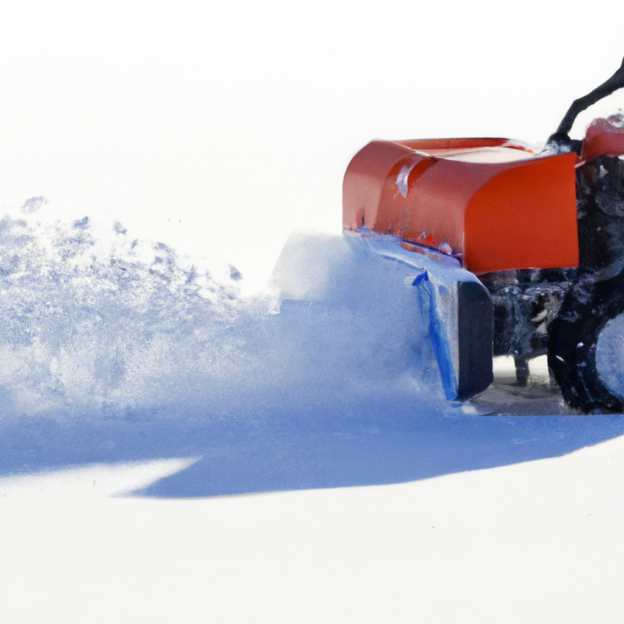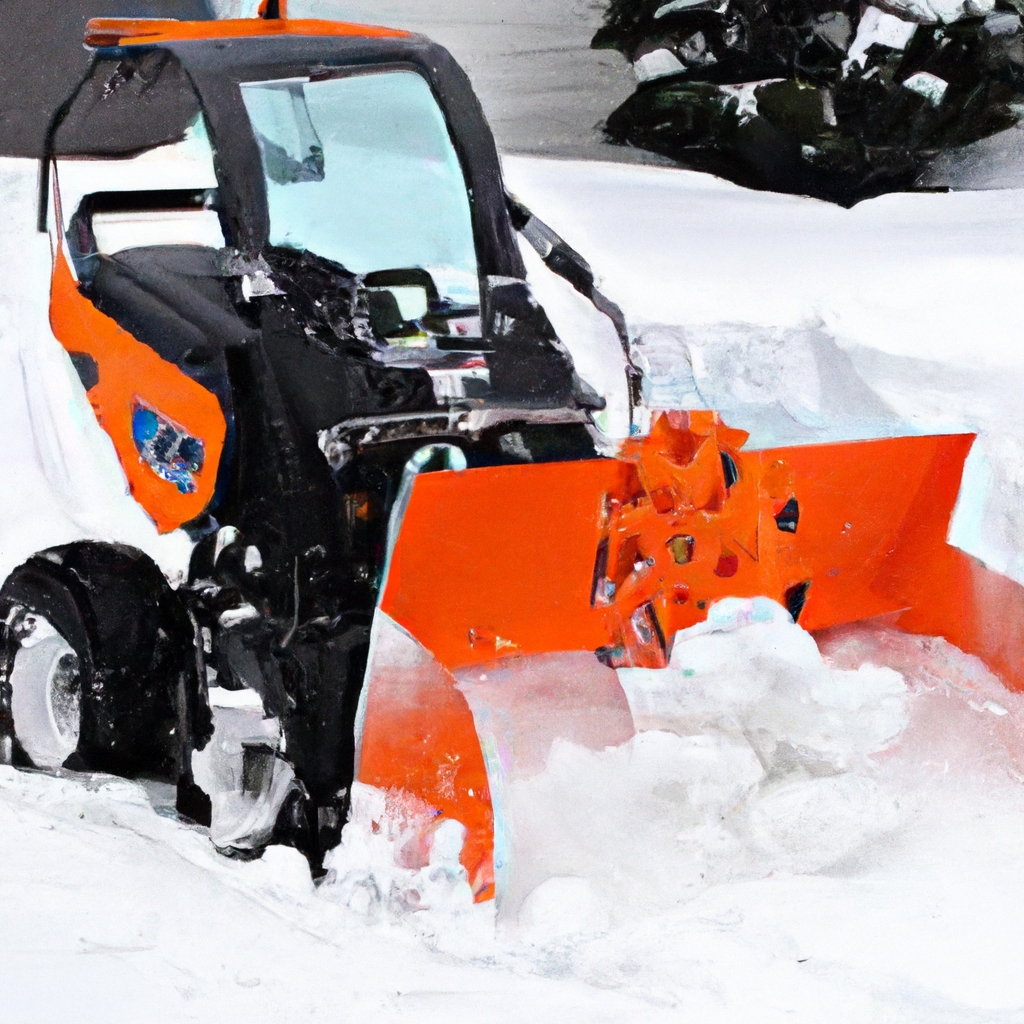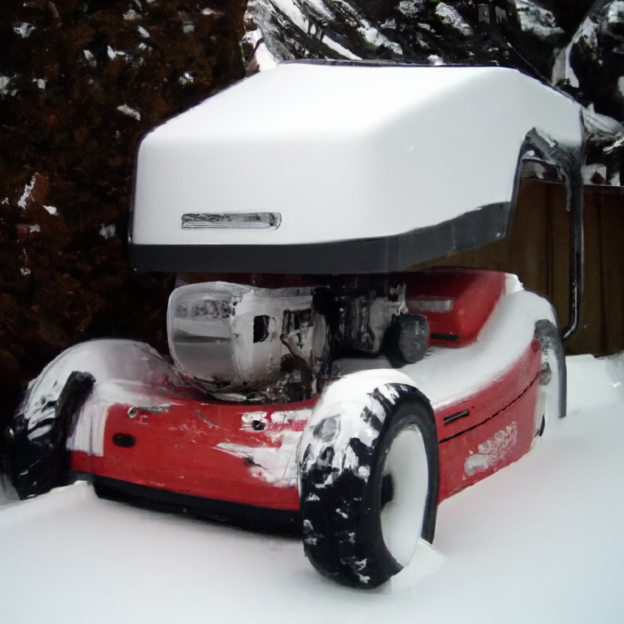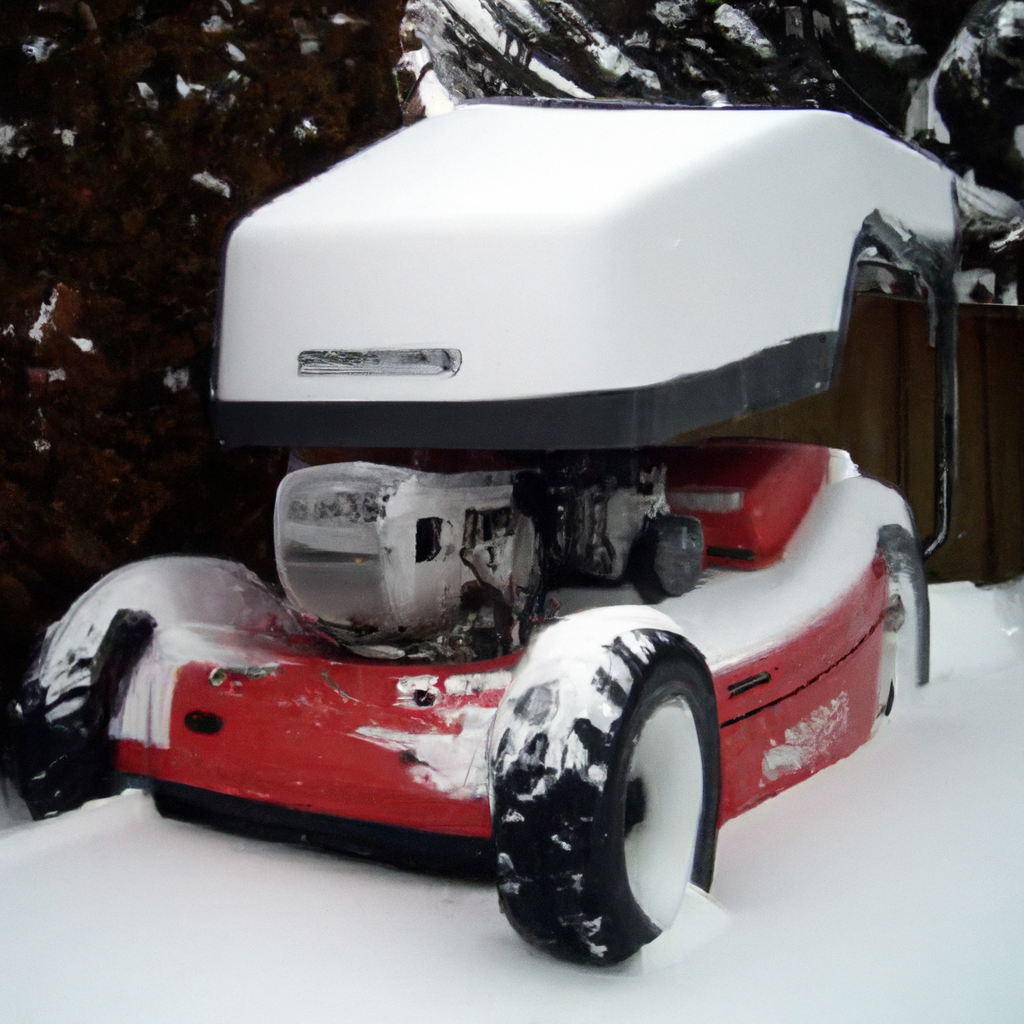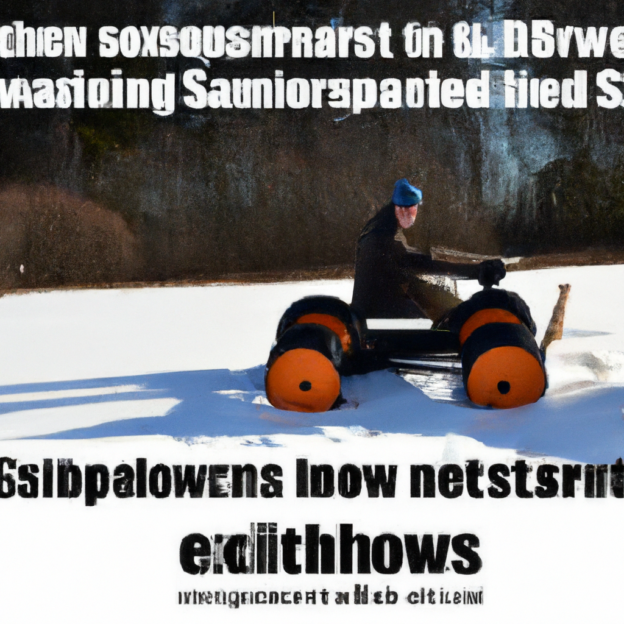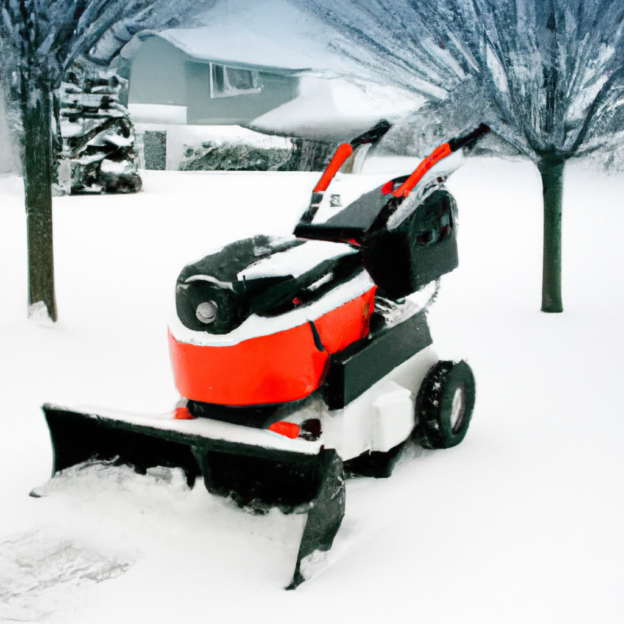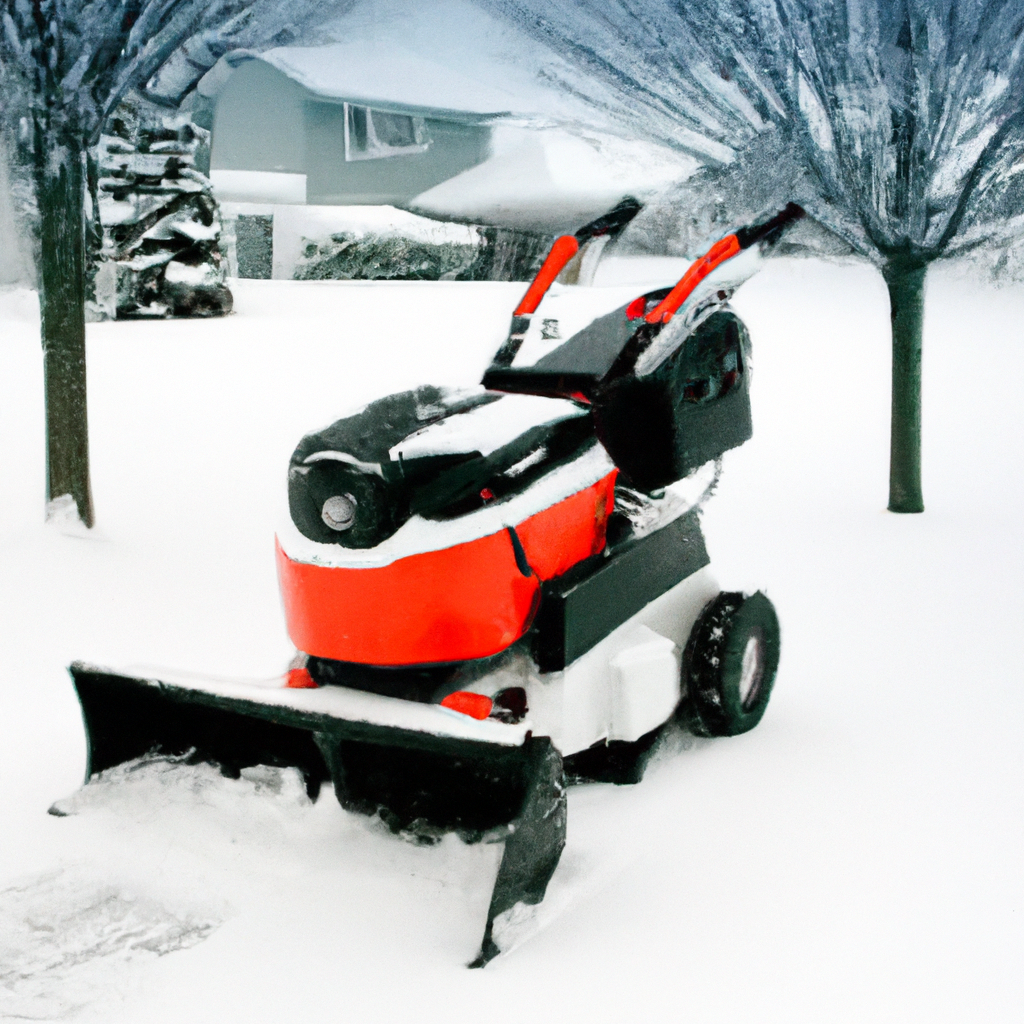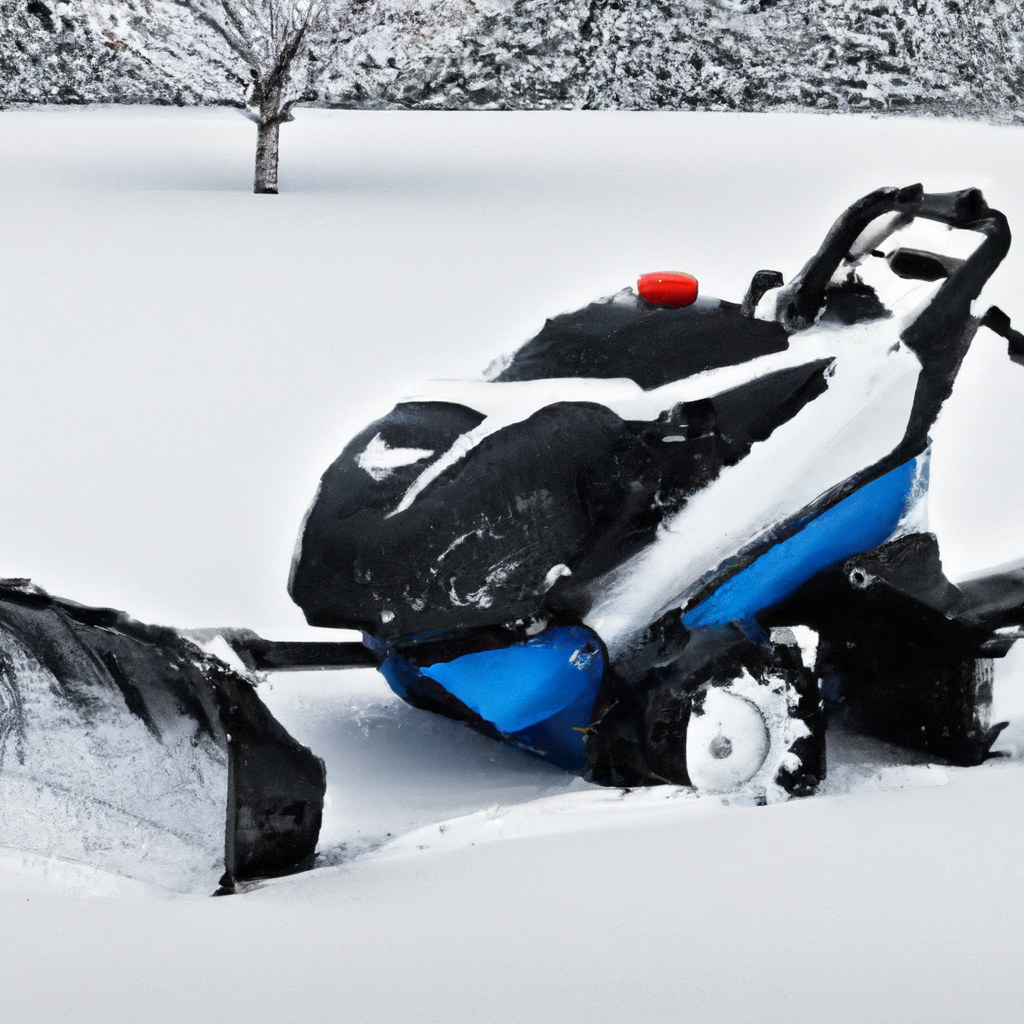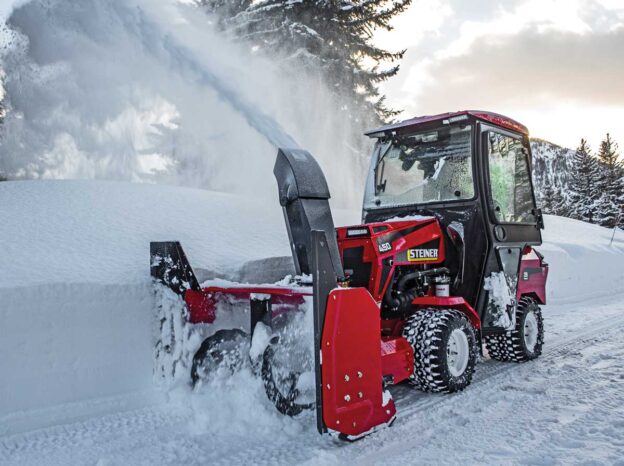When the winter snow starts piling up, you find yourself relying on your trusty snowblower to clear your driveway and walkways. But have you ever stopped to think about the impact of those loud, gas-guzzling machines on the environment? In our quest for a greener lifestyle, it’s time to explore whether there are eco-friendly alternatives to the traditional snowblowers we’ve come to rely on.

Electric Snowblowers
Advantages of Electric Snowblowers
Electric snowblowers have become popular in recent years, and for good reason. One of the main advantages of electric snowblowers is their environmental friendliness. Unlike gas-powered snowblowers, electric models do not emit harmful pollutants into the air. This makes them a much cleaner option for removing snow from your driveway or sidewalk.
Another advantage of electric snowblowers is their ease of use. They are typically lightweight and easy to maneuver, making them a great choice for people of all ages and fitness levels. Additionally, electric snowblowers are often quieter than their gas-powered counterparts, allowing you to clear the snow without disturbing your neighbors or waking up the entire household.
Disadvantages of Electric Snowblowers
While electric snowblowers have their benefits, they also come with a few drawbacks. One of the main disadvantages is their limited power compared to gas-powered snowblowers. Electric models may struggle with heavy, wet snow or large snowdrifts, requiring more time and effort to clear the snow completely.
Another disadvantage is the need for a power source. Electric snowblowers must be plugged into an electrical outlet, which can limit their mobility and make them less suitable for larger areas or properties without easy access to outdoor power outlets. Additionally, the power cord can be a hindrance, as it may become tangled or restrict your movement while operating the snowblower.
Features to Look for in an Electric Snowblower
When choosing an electric snowblower, there are a few key features to consider. First and foremost, look for a model with sufficient power to meet your snow removal needs. Check the motor size and the maximum clearing width to ensure it can effectively handle the amount of snow you typically receive.
Next, consider the snowblower’s clearing capacity and throwing distance. A larger clearing capacity means you can clear a wider path with each pass, reducing the time it takes to clear your driveway or sidewalk. Additionally, a longer throwing distance allows you to easily move the snow away from your cleared area.
Other features to look for include adjustable chute direction and deflector, which allow you to control where the snow is thrown; an adjustable handle height for added comfort; and a durable construction to withstand the rigors of snow removal season after season.
Battery-Powered Snowblowers
Advantages of Battery-Powered Snowblowers
Battery-powered snowblowers offer a convenient and eco-friendly alternative to both gas-powered and electric snowblowers. One of the main advantages of these snowblowers is their portability. Since they are not tethered to a power cord, you have the freedom to move around and clear snow in any area without restrictions. This makes them particularly useful for larger properties or areas without easy access to power outlets.
Another advantage is the reduced noise level compared to gas-powered snowblowers. Battery-powered snowblowers operate quietly, allowing you to clear snow without disturbing the peace. This can be especially beneficial if you have neighbors who value tranquility or if you prefer to clear snow early in the morning or late at night.
Disadvantages of Battery-Powered Snowblowers
While battery-powered snowblowers have their advantages, they do have a few disadvantages to consider. One of the main drawbacks is limited battery life. Depending on the model and battery capacity, you may need to recharge or replace the battery during a snow-clearing session, which can be inconvenient if you have a large area to clear or if you experience heavy snowfall.
Another disadvantage is the overall power of battery-powered snowblowers. While they are typically sufficient for light to moderate snowfall, they may struggle with heavy, wet snow or thick snowdrifts. If you live in an area with frequent heavy snowfall, you may want to consider a more powerful option or have a backup plan in case the battery runs out mid-task.
Choosing the Right Battery-Powered Snowblower
When selecting a battery-powered snowblower, consider the battery life and charging time. Look for a model with a battery that can last long enough to clear your desired area without needing frequent recharging. Additionally, check how long it takes to charge the battery fully, as some models may have longer charging times than others.
Pay attention to the clearing width and depth of the snowblower, as well as the throwing distance. A wider clearing width and greater throwing distance will allow you to clear snow more efficiently. Also, consider the weight and maneuverability of the snowblower, especially if you have uneven terrain or tight spaces to navigate.
Other features to consider include adjustable chute direction and deflector, adjustable handle height, and the overall durability of the snowblower. Additionally, check if the battery is removable, as this can be useful if you want to have a spare battery on hand for extended snow-clearing sessions.
Manual Snowblowers
Advantages of Manual Snowblowers
Manual snowblowers, also known as snow shovels or snow pushers, offer a more traditional and low-tech approach to snow removal. One of the main advantages of manual snowblowers is their simplicity. They do not require any fuel, electricity, or batteries to operate, making them an eco-friendly option. Additionally, manual snowblowers are typically lightweight and easy to store, making them a practical choice for homeowners with limited storage space.
Another advantage is the cost. Manual snowblowers are generally more affordable than their powered counterparts, making them an attractive option for budget-conscious individuals or those who only have occasional snow removal needs. By opting for a manual snowblower, you can save money and still effectively remove snow from your driveway or sidewalk.
Disadvantages of Manual Snowblowers
Despite their advantages, manual snowblowers have a few limitations. One of the main disadvantages is the physical effort required to use them. Since manual snowblowers rely on your own strength and endurance, clearing large areas or heavy snow can be exhausting and time-consuming. This can be particularly challenging for individuals with limited mobility or health issues.
Another disadvantage is the slower clearing speed compared to powered snowblowers. Since you need to manually lift and push the snow, the process is generally slower and less efficient. If you have a large area to clear or frequently experience heavy snowfall, manual snowblowers may not be the most practical choice as they can extend the time and effort required for snow removal.
Types of Manual Snowblowers
There are several types of manual snowblowers to choose from, each with its own advantages and disadvantages. The traditional snow shovel is a popular choice and comes in various designs, including square-nose shovels, round-nose shovels, and ergonomic shovels. Square-nose shovels are best for lifting and throwing snow, while round-nose shovels are more suitable for pushing snow. Ergonomic shovels feature a curved handle to reduce strain on your back and wrists.
Alternatively, you can opt for a snow pusher, which is designed to push large amounts of snow without lifting. Snow pushers typically have wide blades and long handles, allowing you to clear a wide path with each push. They are particularly efficient for clearing light to moderate snowfall on flat surfaces.
When choosing a manual snowblower, consider the construction and durability of the shovel or pusher. Look for materials such as sturdy plastic or aluminum, as they are lightweight yet durable. Additionally, check the handle design and grip to ensure comfort and control while clearing snow.

Eco-Friendly Snow Shovels
Advantages of Eco-Friendly Snow Shovels
Eco-friendly snow shovels provide a sustainable and environmentally conscious approach to snow removal. One of the main advantages of these shovels is their use of recycled or biodegradable materials. Some eco-friendly snow shovels are made from recycled plastics, reducing the demand for new plastic production and minimizing environmental impact.
Additionally, eco-friendly snow shovels may incorporate sustainable manufacturing practices, such as reducing energy consumption or utilizing renewable energy sources during production. By choosing an eco-friendly snow shovel, you can contribute to a greener future and minimize your carbon footprint.
Disadvantages of Eco-Friendly Snow Shovels
While eco-friendly snow shovels have their benefits, they also come with a few disadvantages. One of the main drawbacks is their availability and variety. Eco-friendly options may not be as widely available as traditional snow shovels, limiting your choices. Additionally, the selection of eco-friendly snow shovels may be more limited in terms of design and features.
Another disadvantage is the potential trade-off between sustainability and durability. Some eco-friendly materials may not be as durable as traditional materials, which can affect the lifespan and effectiveness of the snow shovel. It’s important to carefully assess the quality and construction of eco-friendly snow shovels to ensure they can withstand the rigors of snow removal.
Features to Consider in an Eco-Friendly Snow Shovel
When selecting an eco-friendly snow shovel, consider the material used in its construction. Look for shovels made from recycled plastics or other sustainable materials. Additionally, check if the shovel is biodegradable or compostable at the end of its lifespan to further minimize waste.
Pay attention to the design and functionality of the snow shovel. Look for features such as a wide blade for efficient snow clearing, a comfortable grip, and a sturdy construction. Also, consider the weight and maneuverability of the snow shovel to ensure ease of use, especially if you have a large area to clear or if you struggle with heavy snow.
Other factors to consider include the shovel’s size and shape. Depending on your snow removal needs, you may prefer a smaller, more compact shovel for tight spaces or a larger shovel for clearing wide paths faster. Ultimately, choose an eco-friendly snow shovel that suits your specific requirements while aligning with your sustainability goals.
Propane-Powered Snowblowers
Advantages of Propane-Powered Snowblowers
Propane-powered snowblowers offer a powerful and efficient solution to snow removal. One of the main advantages of these snowblowers is their portability. Since they do not require a power cord or electrical outlet, you have the freedom to move around and clear snow in any area without restrictions. This makes them particularly suitable for large properties or areas with limited access to electricity.
Another advantage is the increased power compared to electric snowblowers. Propane-powered snowblowers can tackle heavy, wet snow and thick snowdrifts with ease, making them a reliable choice for areas with frequent severe weather conditions. Their strong throwing capacity allows for efficient snow removal, reducing the overall time and effort required.
Disadvantages of Propane-Powered Snowblowers
Despite their advantages, propane-powered snowblowers have a few disadvantages worth considering. One of the main drawbacks is the fuel source. Propane tanks need to be filled or replaced regularly, which can be an additional expense and inconvenience compared to electric or manual snowblowers. It’s important to factor in the cost and availability of propane in your area before investing in a propane-powered snowblower.
Another disadvantage is the noise level. Propane-powered snowblowers can be louder than electric models, which may be a concern if you live in a noise-sensitive neighborhood or prefer quieter snow removal. Be mindful of the noise regulations in your area and consider if the increased power of a propane-powered snowblower outweighs the noise factor for your specific needs.
Choosing the Right Propane-Powered Snowblower
When selecting a propane-powered snowblower, consider the engine power and capacity. Look for models with sufficient horsepower to effectively handle the snowfall in your area. Additionally, check the snowblower’s clearing width and depth, as well as its throwing capacity, to ensure it can handle various snow conditions.
Pay attention to the fuel efficiency of the snowblower. Different models may have varying fuel consumption rates, so choose one that offers a good balance between power and efficiency. Consider the size and weight of the snowblower as well, especially if you have limited storage space or need to transport it frequently.
Other features to consider include adjustable chute direction and deflector, adjustable handle height, and the overall durability of the snowblower. Additionally, check the availability and cost of propane in your area to ensure it is a practical and cost-effective fuel source for your snow-clearing needs.
Hybrid Snowblowers
Advantages of Hybrid Snowblowers
Hybrid snowblowers combine the benefits of different power sources, offering a versatile and efficient solution to snow removal. One of the main advantages of hybrid snowblowers is their flexibility. They typically feature dual-power options, allowing you to switch between electric and gas power depending on your preferences and the specific snow-clearing task at hand.
Another advantage is the increased power and range. Hybrid snowblowers harness the power of both electric and gas engines, providing superior performance in heavy snow conditions. This makes them suitable for areas with significant snowfall or properties with challenging terrain. The ability to switch between power sources also ensures uninterrupted snow clearing even if one power source becomes unavailable.
Disadvantages of Hybrid Snowblowers
While hybrid snowblowers offer versatility, they also come with a few disadvantages to consider. One of the main drawbacks is the cost. Hybrid snowblowers tend to be more expensive than purely electric or gas-powered models due to their dual-power capabilities. If you have a limited budget, a hybrid snowblower may not be the most cost-effective option, especially if you primarily rely on one power source.
Another disadvantage is the added complexity and maintenance requirements. Hybrid snowblowers have both electric and gas components, which may require separate maintenance and servicing. This can lead to increased maintenance costs and potential inconveniences if both power sources need attention simultaneously.
Features to Look for in a Hybrid Snowblower
When choosing a hybrid snowblower, consider the power capacity of both the electric and gas engines. Look for a model that offers sufficient power for your snow removal needs. Check the clearing width and depth, throwing capacity, and overall performance in various snow conditions.
Pay attention to the transition process between power sources. Look for a hybrid snowblower with a seamless switching mechanism that allows you to effortlessly change between electric and gas power without interruptions. Additionally, consider the fuel efficiency of the gas engine and the battery life of the electric motor, as longer-lasting power sources will extend the time you can spend clearing snow.
Other features to consider include adjustable chute direction and deflector, adjustable handle height, and the overall durability of the snowblower. Additionally, check if the hybrid snowblower requires any additional accessories or components to operate efficiently with both power sources.
Solar-Powered Snowblowers
Advantages of Solar-Powered Snowblowers
Solar-powered snowblowers offer a sustainable and energy-efficient option for removing snow from your property. One of the main advantages of solar-powered snowblowers is their environmental friendliness. They harness the power of the sun, a renewable energy source, to operate. By using solar power, you can reduce your carbon footprint and help combat climate change.
Another advantage is the potential cost savings in the long run. Once you have installed a solar-powered snowblower, its energy source is free, allowing you to save on electricity or fuel costs over time. With the advancements in solar technology, solar-powered snowblowers continue to improve in performance and efficiency, making them a viable option for sustainable snow removal.
Disadvantages of Solar-Powered Snowblowers
While solar-powered snowblowers offer several benefits, they also have a few disadvantages worth considering. One of the main drawbacks is their dependence on sunlight. Solar-powered snowblowers require direct exposure to the sun to function optimally. If you live in an area with limited sunlight during winter or have significant cloud cover, the snowblower’s efficiency may be compromised.
Another disadvantage is the initial cost and setup. Solar-powered snowblowers tend to be more expensive upfront compared to traditional snowblowers. Additionally, the installation process may require professional assistance to ensure proper positioning and connection to the solar panels. Be prepared to invest both time and money in the setup of a solar-powered snowblower.
Factors to Consider Before Choosing a Solar-Powered Snowblower
Before choosing a solar-powered snowblower, assess the amount of sunlight your property receives during the winter months. Consider factors such as the angle and orientation of your roof or other potential mounting locations for the solar panels. A professional assessment or consultation can help determine the feasibility and potential efficiency of solar power in your specific location.
Check the power capacity and battery life of the snowblower. Look for models that offer sufficient power for your snow removal needs, even with limited sunlight conditions. Additionally, consider the battery capacity and charging time, as it may need to store enough energy to operate during extended periods without direct sunlight.
Other features to look for include adjustable chute direction and deflector, adjustable handle height, and the overall durability and weather resistance of the snowblower. Consider the warranty and customer support offered by the manufacturer, as solar-powered snowblowers can be a significant investment.
Wind-Powered Snowblowers
Advantages of Wind-Powered Snowblowers
Wind-powered snowblowers offer a unique and environmentally friendly approach to snow removal. One of the main advantages of wind-powered snowblowers is their reliance on natural wind power. They harness the energy produced by wind to clear snow, eliminating the need for fuel, electricity, or batteries. By utilizing wind power, you can significantly reduce your carbon footprint and contribute to clean energy generation.
Another advantage is their simplicity and low maintenance requirements. Wind-powered snowblowers generally have fewer components and moving parts compared to other types of snowblowers, reducing the risk of mechanical failures or breakdowns. This can result in cost savings over time, as you won’t need to invest in fuel, electricity, or regular maintenance.
Disadvantages of Wind-Powered Snowblowers
While wind-powered snowblowers offer unique benefits, they also have a few drawbacks. One of the main limitations is their dependence on wind conditions. Wind-powered snowblowers require a consistent and adequate amount of wind to function effectively. If you live in an area with unpredictable or insufficient wind patterns, the snowblower’s performance may be inconsistent or unreliable.
Another disadvantage is the coverage area. Wind-powered snowblowers typically have a more narrow clearing path compared to other snowblower types. This means that it may take more time and effort to clear a large area, especially if the wind speed is not consistent or if you have significant snow accumulation.
Considerations for Wind-Powered Snowblowers
Before choosing a wind-powered snowblower, assess the wind conditions in your area. Consider factors such as average wind speed, wind patterns, and potential wind obstructions. Ideally, select a location with a consistent and adequate wind flow to ensure optimal performance of the snowblower.
Check the size and capacity of the wind turbine or fan in the snowblower. Look for models with a larger turbine diameter or higher wind resistance rating, as they are generally more efficient in converting wind power into snow-clearing energy. Additionally, consider the overall construction and durability of the snowblower, as it needs to withstand various weather conditions.
Other features to consider include adjustable chute direction and deflector, adjustable handle height, and the overall maneuverability of the snowblower. Additionally, check if the wind-powered snowblower requires any additional accessories or components for installation and operation.
Steam-Powered Snowblowers
Advantages of Steam-Powered Snowblowers
Steam-powered snowblowers provide a unique and environmentally friendly option for snow removal. One of the main advantages of steam-powered snowblowers is their use of water as fuel. They convert water into steam, which is used to melt and remove the snow. This eliminates the need for fossil fuels or electricity, making steam-powered snowblowers a sustainable and eco-friendly choice.
Another advantage is their effectiveness in removing snow and ice. Steam-powered snowblowers can effortlessly melt snow and ice, even in low temperatures, leaving behind clean and dry surfaces. This can help prevent the formation of ice patches, reducing the risk of slips and falls. Additionally, steam-powered snowblowers can penetrate and remove hard-packed snow, making them suitable for densely packed or stubborn accumulations.
Disadvantages of Steam-Powered Snowblowers
While steam-powered snowblowers offer their unique advantages, they also come with a few considerations. One of the main disadvantages is the setup and maintenance requirements. Steam-powered snowblowers rely on a boiler or other heating mechanism to convert water into steam, which may require specialized knowledge or professional assistance for installation and maintenance.
Another disadvantage is the time required to generate steam. Heating water to produce steam can take longer compared to starting up a powered snowblower. If you frequently need to clear snow in a time-sensitive manner, steam-powered snowblowers may not be the most efficient option, as they may take longer to be ready for operation.
Features to Look for in a Steam-Powered Snowblower
When selecting a steam-powered snowblower, consider the heating mechanism or boiler system. Look for models with efficient heating elements or boilers that can quickly produce steam, reducing the waiting time for snow removal. Additionally, check the fuel source for the heating mechanism, such as propane or natural gas, and consider the availability and cost of the fuel in your area.
Pay attention to the steam capacity and melting performance of the snowblower. Look for models with sufficient steam output to effectively melt and remove the snow in your desired area. Additionally, consider the clearance width and depth, as well as the throwing capacity, to ensure the snowblower can handle various snow conditions.
Other features to consider include adjustable steam outlet direction, adjustable handle height, and the overall durability and weather resistance of the snowblower. Additionally, check the warranty and customer support offered by the manufacturer, as steam-powered snowblowers can be a significant investment.
Conclusion
When it comes to snow removal, there are numerous options available, each with their own set of advantages and disadvantages. Electric snowblowers offer eco-friendly and user-friendly features, although they may have limited power and mobility. Battery-powered snowblowers provide portability and reduced noise, but their battery life can be a limitation. Manual snowblowers offer simplicity and affordability, but physical exertion may be a challenge for some.
Eco-friendly snow shovels prioritize sustainability with recycled or biodegradable materials, yet their availability and durability may vary. Propane-powered snowblowers offer power and portability, but fuel costs and noise levels should be considered. Hybrid snowblowers provide flexibility and increased power, but their higher cost and maintenance requirements may limit their appeal.
Solar-powered snowblowers harness renewable energy but depend on sunlight availability and can be costlier to install. Wind-powered snowblowers offer clean energy but rely on consistent wind conditions and have narrower coverage. Steam-powered snowblowers utilize water as fuel and deliver effective melting performance, yet setup and maintenance requirements should be taken into account.
Ultimately, the best choice for you depends on factors such as your snow removal needs, property size, budget, and environmental priorities. By considering the advantages and disadvantages of each snow removal option, you can make an informed decision and select the most suitable snowblower or shovel for your specific requirements.

